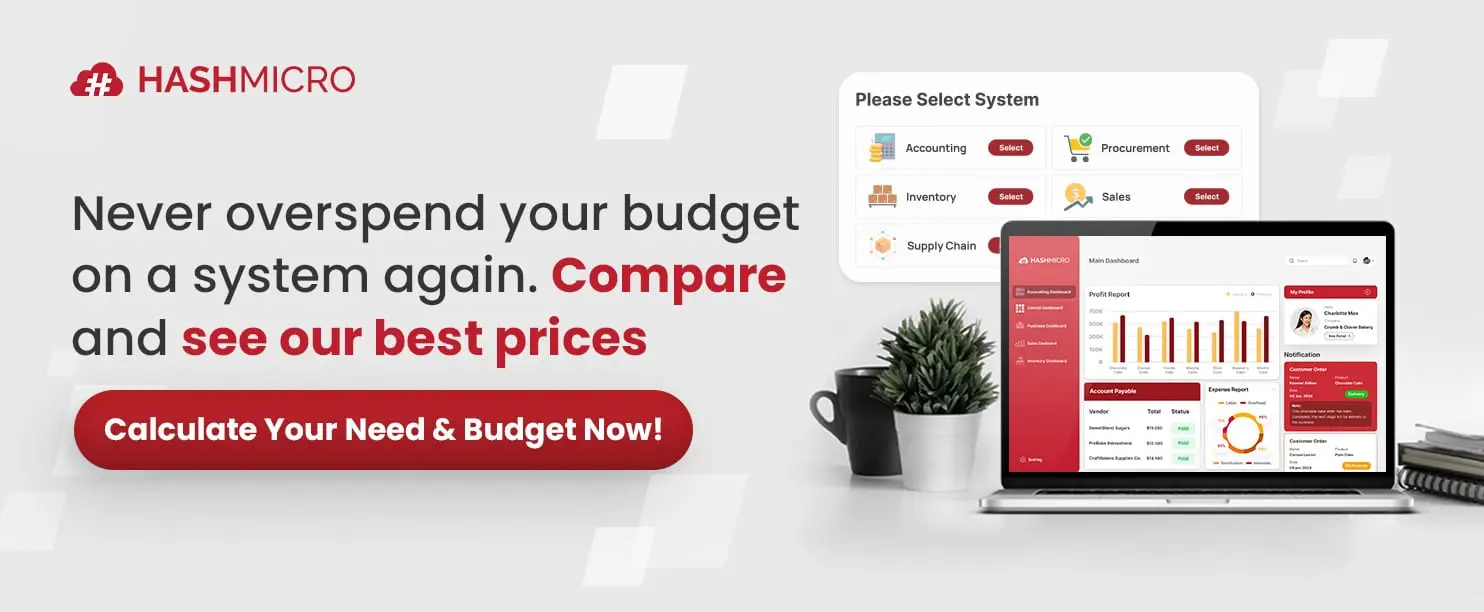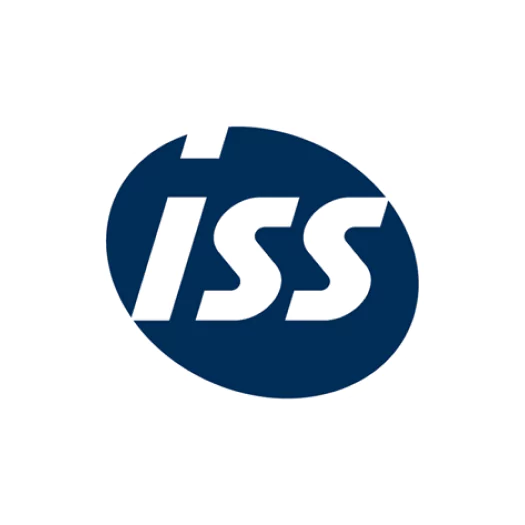Have you ever lost track of an item inside your own warehouse? If you’ve spent hours searching for a missing product, you’re definitely not alone. Even the most experienced warehouse logistics managers have felt the frustration of chasing down inventory that should have been easy to find.
It’s a familiar story: urgent orders are waiting, but your team can’t locate half the items listed in the system. Delays pile up, customers get restless, and suddenly a simple mix-up turns into a real problem for your entire operation.
These challenges aren’t just minor hiccups, they show your warehouse logistics need a serious upgrade. HashMicro’s Warehouse Management System is the best solution to optimize inventory and operations. Try the free demo today and feel the difference. In connection with this, explore the following article to learn more about warehouse logistics.
Key Takeaways
|
What is Warehouse Logistics?
Warehouse logistics refers to the process of managing the movement of goods into, within, and out of a warehouse, along with the information that tracks these activities, such as delivery times, product details, and storage locations. It covers both the physical flow of goods and the non-physical aspects like data coordination, scheduling, and workflow management.
The scope of warehouse logistics includes organizing inventory, handling and storing items properly, managing returns, addressing damaged goods, maintaining safety and pest control, and overseeing warehouse staff. In short, it encompasses all systems, procedures, and strategies needed to keep warehouse app operations efficient and well-coordinated.
Warehouse Logistics vs. Supply Chain Management
While warehouse logistics and supply chain management are closely connected, they refer to different areas. Warehouse logistics deals with the internal operations of a warehouse, such as receiving inventory, storing items, picking and packing orders, and dispatching shipments.
On the other hand, supply chain management covers a much wider range of activities. It involves overseeing the entire journey of a product, from sourcing raw materials to delivering finished goods to customers.
This includes not only warehouse logistics but also supplier coordination, demand planning, transportation, and handling product returns.
For a closer look at how warehouse activities are structured, you can also read about effective warehouse planning methods.
Benefits of Warehouse Logistics
As you might already know, the global logistics market trend shows that the market is expanding rapidly. As such, having a proper warehouse logistics is not only necessary, but also competitive.
A strong warehouse logistics strategy can directly improve your business by:
- Speeding up order processing and fulfillment
- Preventing overstocking or stockouts
- Ensuring timely deliveries and precise reorder points
- Cutting down labor and storage costs
- Improving customer experience through faster service
When logistics are well-managed, your supply chain runs more smoothly. This leads to reduced costs for your business and faster, more affordable delivery for your customers.
If your goal is to offer quality products at competitive prices, optimizing warehouse logistics is essential. It minimizes waste, avoids delays, and keeps both your operations and customers satisfied.
Start by listing specific pain points in your warehouse, such as misplaced stock, delayed shipments, or inaccurate inventory records. Then, build a targeted plan to solve them.
To boost the benefits even more, many companies are using a Warehouse Management System (WMS), which can help track real-time inventory, automate routine tasks, and centralize your data for better control and decision-making.
Efficient warehouse logistics helps keep operations organized and error-free. You can further improve control with effective inventory tracking for real-time stock insights
Warehouse Logistics Process
The warehouse logistics process consists of several key stages that guide how goods move through a warehouse, from the moment they arrive to the moment they are shipped out. Each step plays a crucial role in maintaining accuracy, ensuring smooth workflows, and supporting overall supply chain performance. Below are the core stages in a typical warehouse logistics flow:
1. Receiving
Items arriving from suppliers must be checked for quantity, condition, delivery timing, and price accuracy. Once verified, the receiving team updates all internal records to ensure accurate tracking.
2. Inventory Management
After receiving, goods are strategically stored based on turnover rate and accessibility. This step often involves using racks, AS/RS systems, and inventory management software to optimize storage and handling.
3. Warehouse Layout Optimization
A well-designed warehouse layout helps minimize unnecessary movement. Fast-moving SKUs are placed in easily accessible areas, and layouts like U-shaped flow support efficient movement from receiving to dispatch.
4. Picking
Products are selected from storage for production needs or customer orders. Methods like batch picking or zone picking help speed up retrieval and reduce travel time.
5. Packing
Picked items are prepared for shipment using proper packaging materials, labeling, and documentation updates. This step ensures products reach customers safely and accurately.
6. Shipping
The final stage involves labeling, scheduling transportation, tracking shipments, and resolving delivery issues. All shipments are recorded to maintain transparent warehouse operations.
Challenges of Warehouse Logistics
Warehouse management isn’t a small matter. Whether big or small, any warehouses must have encountered these common challenges:
1. Accidental Redundancy
Warehouses often carry out multiple operations per item, and these tasks are linked through workflows. When workflows are poorly structured, the same task may be repeated unnecessarily.
This raises labor costs and wastes time correcting errors. Larger warehouses face this more frequently due to their size and inventory volume.
Redundancy is most common during order picking, where items are retrieved from storage to fulfill orders. In larger facilities, more particularly, multiple workers pick items across different zones, increasing the risk of picking duplicate items for the same order.
2. Messy Warehouse Layout
As storage costs have increased, managers have aimed to use warehouse space more efficiently. Yet, a 2018 Logistics Management survey found that manufacturers use only about 68% of their warehouse capacity. Poor space usage remains a widespread issue.
An ideal warehouse layout maximizes floor and vertical space while ensuring clear paths for workers. It also considers automation, product accessibility, organized inventory categories, and safe storage practices.
3. Bad Inventory Management
Common signs include expecting an item in one location but finding it elsewhere, confirming orders without having enough stock, rejecting orders when stock is actually available, or not knowing where to store incoming items.
These issues suggest inventory records aren’t accurate or consistently updated, which indicates that small businesses don’t track inventory or use manual systems. In addition, many businesses delay shipments due to stock discrepancies. Manual checks and outdated software often lead to such mistakes.
4. Poor Preparedness for Seasonal Demands
Some products sell consistently year-round, while others see seasonal spikes. Unexpected demand surges can cause problems if warehouses lack stock or space to handle them. Being aware of market trends and demand patterns is key to managing seasonal inventory changes.
5. Unsatisfactory Order Management
Order management covers everything from receiving an order to picking, packing, shipping, and post-sale processes like returns. Errors in any step can disrupt the workflow and force a restart, leading to delays and increased costs.
6. Excessive Spending on Labor
Warehouses rely on workers for various tasks, including cleaning, picking, loading, and supervision. Many believe only equipment and automation are expensive, but manual labor can be just as costly. Labor also accounts for 50–70% of warehousing costs.
7. Poor Damage Control
Damage is common in warehouses, especially those handling large volumes and heavy equipment. Though it’s hard to eliminate entirely, steps can be taken to reduce the risk of damage.

How to Maximize Warehouse Flow
Since warehouse logistics are the backbone of supply chain management among other factors, the companies must implement ways to make it fast and efficient. You might wonder by now, how to maximize the way your warehouse works? Take a look at these strategies to start out:
Before setting up your warehouse:
- Pick a location that minimizes transportation costs and is close to key customer areas.
- Ensure you have enough funding to support the setup process.
- Design an efficient floor plan to maximize space, reduce risks, and support smooth workflows, such as positioning loading zones near access roads.
- Recruit skilled staff to manage warehouse operations.
- Choose suitable tools and machinery based on your operational needs.
After your warehouse is operational:
- Plan and track daily operating expenses.
- Study market trends and forecast demand to maintain adequate stock levels.
- Use reliable supply chain management software to monitor and control warehouse activities.
- Develop clear procedures for handling damaged goods and customer returns.
- Apply pest control strategies to safeguard your inventory.
- Set and enforce safety guidelines to reduce accident risks and manage emergencies effectively.
Optimize Your Warehouse with HashMicro Warehouse Management System
Running a warehouse in Malaysia comes with its own set of challenges. Whether it’s duplicated tasks, inaccurate stock levels, or high labour costs, many of these issues stem from fragmented processes and lack of system integration.
HashMicro’s Warehouse Management System (WMS) is designed to help Malaysian businesses gain full control over their warehouse operations, while cutting down inefficiencies and compliance risks.
With HashMicro WMS, you can:
- Avoid task duplication with real-time order and workflow tracking
- Optimise your warehouse layout using smart putaway strategies
- Keep stock records accurate with automated inventory monitoring
- Plan ahead for peak demand periods like Ramadan or year-end clearance
- Reduce manual labour by automating key warehouse tasks
Used by leading businesses across Malaysia, our system supports local tax and customs requirements, and integrates easily with your existing inventory, accounting, and sales platforms.
Conclusion
Warehouse logistics covers every process inside the warehouse, from inventory control to efficient order fulfillment. It also involves managing time, space, people, and data to keep daily operations smooth and cost-effective.
With HashMicro WMS, you can take full control of your warehouse and eliminate repetitive, costly manual work. It’s a smart solution built for Malaysian businesses that want speed, accuracy, and complete operational visibility.
If your warehouse is growing fast, now’s the time to upgrade to a system that grows with you. Try a free demo and experience how HashMicro WMS helps your team work faster with fewer mistakes!

FAQ on Warehouse Logistics
-
What is the job of a warehouse and logistics?
The job of warehouse and logistics is to manage the storage, movement, and tracking of goods within a facility. It ensures products are received, stored, picked, packed, and shipped efficiently to support overall supply chain operations.
-
What are 3 key parts of warehousing logistics?
The three key parts are:
- Inventory management: tracking stock levels and locations accurately
- Order fulfillment: picking, packing, and shipping items on time
- Storage optimization: organizing space for safe and accessible product placement
-
What is the function of warehouse in logistics?
The warehouse functions as a central hub where goods are stored, sorted, and prepared for distribution. It plays a critical role in balancing supply and demand while ensuring timely product delivery to customers or retailers.
-
How does warehouse logistics impact customer satisfaction?
Efficient warehouse logistics helps ensure products are delivered accurately and on time, reducing errors and delays. This leads to better service quality, higher reliability, and increased customer trust in your business.


























